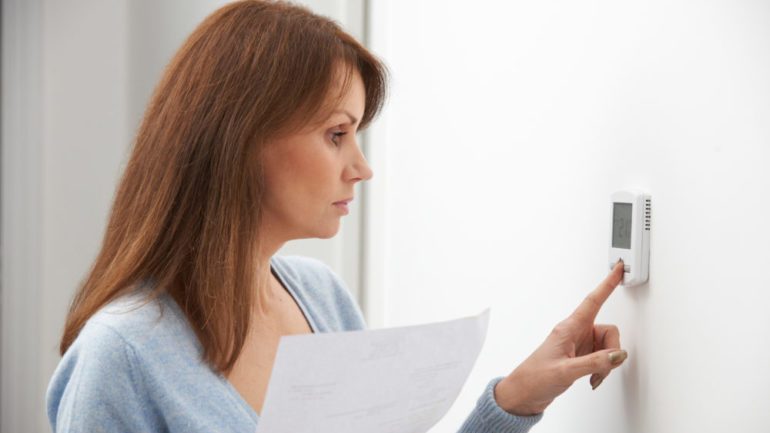Summer’s merciless heat and winter’s icy temperatures make it hard to set your thermostat without breaking the bank. Here’s how to keep both your home and your wallet comfy.
What the experts recommend
Energy experts say the optimum in-home temperature is 78 degrees in summer and 68 in winter, at least during the hours when you or your family are at home and awake. For times when no one’s home for more than four hours, bump the thermostat up to 85 degrees in summer and 62 in the summer. For sleeping, target 82 degrees in summer and 62 in winter.
These temps may seem unreasonable if you live in the scorching south or frigid north. After all, you want dramatic relief when coming in from those outdoor extremes! Yet energy experts say each degree off the optimum temperatures increases your energy bill by 3 to 6 percent. You can adapt to the recommendations gradually by starting a few degrees from what is optimal and incrementally adjusting over time.
When coming inside, resist the urge to seek immediate relief by overriding the programmed temperature. These gyrations jack up your energy usage and costs.
Programmable and smart thermostats
Programmable and smart thermostats help you save money on energy bills. With these thermostats, you set the recommended temperature levels for when you are at home, away at work, back home again and then sleeping. No longer do you have to rely on your memory to adjust temps throughout the day. These thermostats also have “hold” or “vacation” features, which allow you to schedule a different set of temperatures when you are away from home for an extended period of time. If you have multiple systems servicing different parts of the house, you can tailor the programming for each system.
The difference between a programmable and a smart thermostat is that the latter has intuitive features that can further refine temperature control according to your habits. A smart thermostat can be remotely controlled with a phone app. And using GPS technology, it can sense when you are nearing home and adjust the temperature accordingly.
Other comfort and energy saving tips
Supplement your good thermostat management by making sure you are covering other energy-saving basics. Make sure your attic has the proper amount of insulation for your climate zone according to the federal Department of Energy. Ensure that your windows and door frames have good caulk and weather stripping.
Use ceiling fans in both summer and winter to help augment comfort levels. In summer, set the fan to turn counterclockwise. In winter, reverse the direction.
Related – Save Energy and Money With a Digital Thermostat


